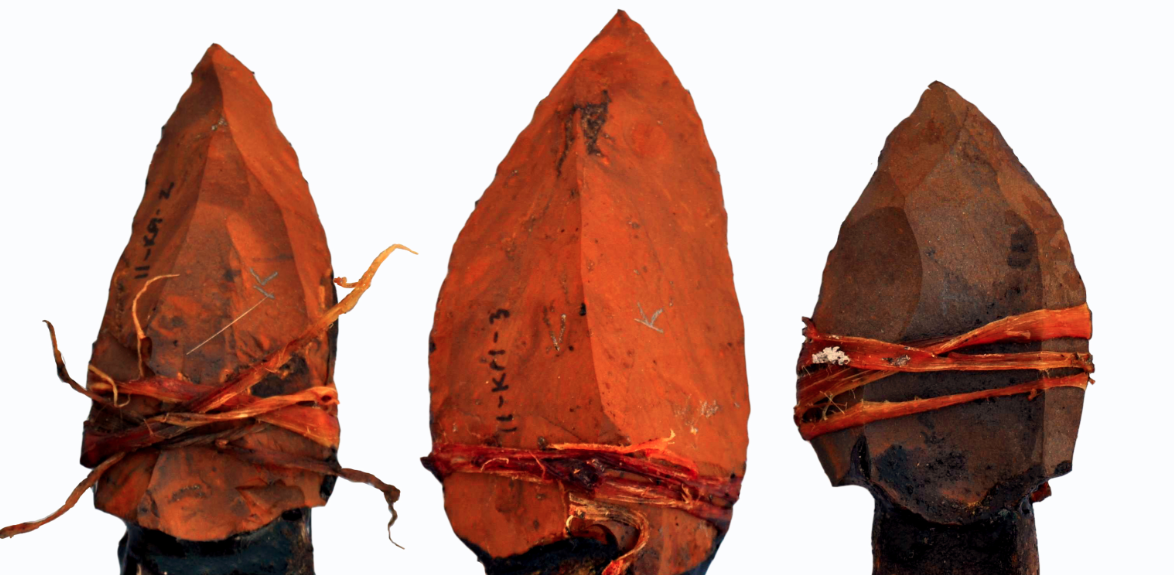New Scientist
Image: Jayne Wilkins
The hunt for food led hominins to cast the first stone half a million years ago – 200,000 years earlier than we thought. Archaeologists have found the oldest evidence yet of stone-tipped spears.
The new discovery in South Africa suggests that it was neither our species nor Neanderthals that pioneered the use of such spears, but our shared ancestor Homo heidelbergensis.
We already knew that Homo heidelbergensis could fashion wooden spears – a 500,000-year-old horse shoulder blade from Boxgrove, UK, has a semicircular hole in it that suggests it was pierced by a spear. “But the hole’s bevelled edges and circular shape are not suggestive of a stone-tipped weapon,” says Jayne Wilkins at the University of Toronto in Ontario, Canada.
Stone points used on spears had been found only at sites that date back no more than 300,000 years, and that are associated with Neanderthals or archaic members of our species.
That gives huge significance to a new discovery by Wilkins and her colleagues in 500,000-year-old deposits at Kathu Pan in South Africa. The team unearthed a hoard of stone points, each between 4 and 9 centimetres long, that they think belonged to the earliest stone-tipped spears yet found.
The stone points are the right shape and size for the job, and some have fractured tips suggesting they have been used as weapons. Crucially, though, when the points were retouched after use they were sharpened to maintain their symmetry. Spear tips are treated this way, but handheld cutting tools typically lose their symmetry with time because only the side of the tool that is used for cutting is re-sharpened.
The find does more than simply extend the prehistory of stone-tipped spears – it puts those first spears firmly in the hands of Homo heidelbergensis, says Wilkins. Modern foragers use such tools to take down large game as part of cooperative hunts governed by a strategic plan. Perhaps our ancestor did so too.
“The spears are evidence for the deep accumulation of hunting behaviours in our lineage,” says Wilkins. “They may be coeval with increases in brain size found in Homo heidelbergensis.”
Paola Villa at the University of Colorado Museum in Boulder agrees with the findings. She points out that at a 350,000-year-old site near Schöningen, Germany, wooden spears have been found associated with the remains of 19 horses, suggesting Homo heidelbergensis mounted a carefully planned ambush there. “That early humans had sophisticated cognitive abilities comes as no surprise,” she says.
Last week, some of Wilkins’ colleagues discovered 71,000-year-old stone tips that may have belonged to the world’s earliest arrows. Again, the find was made in South Africa. This might just reflect sampling bias, given that vast areas of Africa have yet to be explored for prehistoric remains.
“Alternatively, it may be that the unique environmental conditions of southern Africa are in part responsible for technological innovation,” says Wilkins. Read more on newscientist.com…








